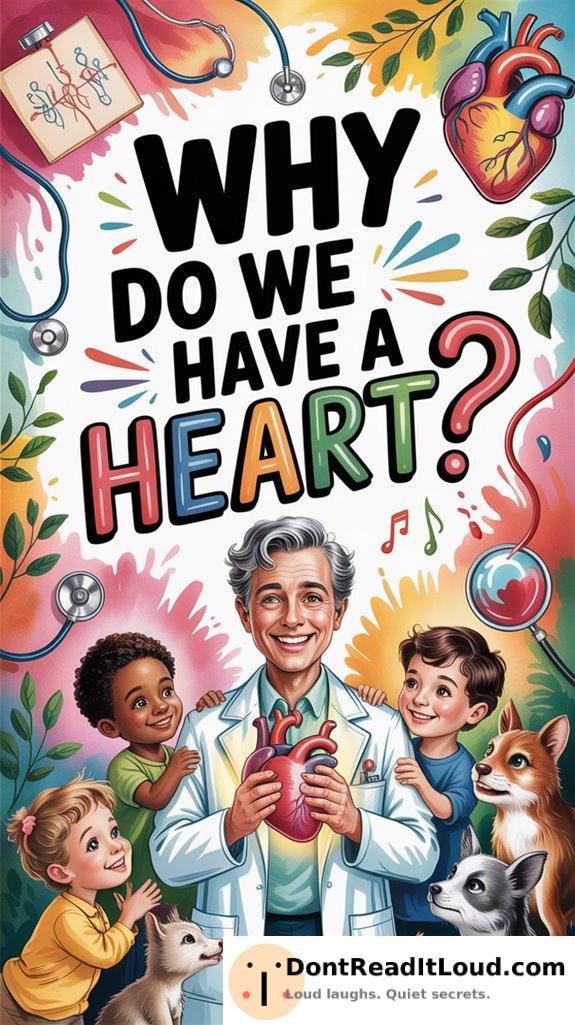
Your heart works tirelessly in your chest, pumping blood to keep you alive. It sends oxygen and nutrients through your blood vessels, helping every cell function. Over time, evolution shaped this organ to handle your body’s needs. Whether you’re running or feeling stressed, your heart adapts to help you cope. Caring for your heart is caring for your whole life. Stick around to learn more about this vital organ.
The Anatomy of the Heart
Have you ever wondered what makes your heart such an essential organ? Envision this: your heart is like a high school cafeteria, bustling with four chambers, each with its unique yet vital role. You’ve got two atriums and two ventricles, each ready to do its part.
These chambers work together, passing blood smoothly from one to the next like a well-coordinated team.
And let’s not forget the valves—those divas of the cardiac world. They’re like bouncers at an exclusive club, making sure blood only moves in the right direction. So next time your heart skips a beat, don’t worry; it’s just your valves keeping things in order while you relax and enjoy the show.
The Role of the Heart in the Circulatory System
Now that you understand the heart’s structure, let’s explore its role in the circulatory system. Picture the heart as your body’s overachieving DJ, pumping up the blood flow with a relentless beat that keeps the party going. It’s the life of your cardiovascular health, ensuring every cell gets its VIP pass of oxygen and nutrients.
Without the heart’s rhythmic prowess, your body’s dance floor would be emptier than a Monday morning gym.
The heart does more than just pump blood. It acts like a traffic cop, guiding blood through your arteries to where it’s needed most. So, next time you break a sweat, thank your heart for being the tireless maestro it is. Keep it happy, and it’ll keep your body’s party alive.
Evolutionary Origins of the Human Heart
Though it might seem like a complex enigma, the human heart’s evolutionary story is a tribute to nature’s ingenuity. Envision our early ancestors, sporting a simple heart that was more rudimentary than refined.
Through cardiovascular evolution, this basic organ gradually developed into the efficient pump we rely on today. Imagine a primitive heart, quietly beating, on its way to becoming the powerhouse behind our advanced circulatory system.
Over millions of years, this change resembled moving from a basic tricycle to a streamlined motorcycle. Our heart’s predecessors mastered survival and efficiency as they adapted.
Adaptive Mechanisms of the Heart
While the heart’s evolution is fascinating, its adaptive mechanisms are equally impressive. Picture your heart as a superhero, always ready to adjust and save the day.
When you’re sprinting for that last bus, your heart steps up, increasing its rate to deliver more oxygen. It’s almost like having a built-in personal trainer.
And let’s not forget cardiac resilience. Your heart isn’t limited to a single response. It gracefully handles stress, caffeine, or excitement without missing a beat.
Whether you’re lounging on the couch or running a marathon, it keeps everything in check. So next time your heart races, appreciate its remarkable adaptability and strength. It’s working hard for you!
Conclusion
You’ve explored the heart’s structure, its essential role in circulation, and its evolutionary history. Clearly, the heart is more than just a simple pump; it’s an impressive product of adaptation, vital for your survival. As it circulates blood, providing oxygen and nutrients, it stands as a testament to nature’s creativity. Remember, your heart’s complexity reflects millions of years of evolution, built to help you thrive in a changing world.



